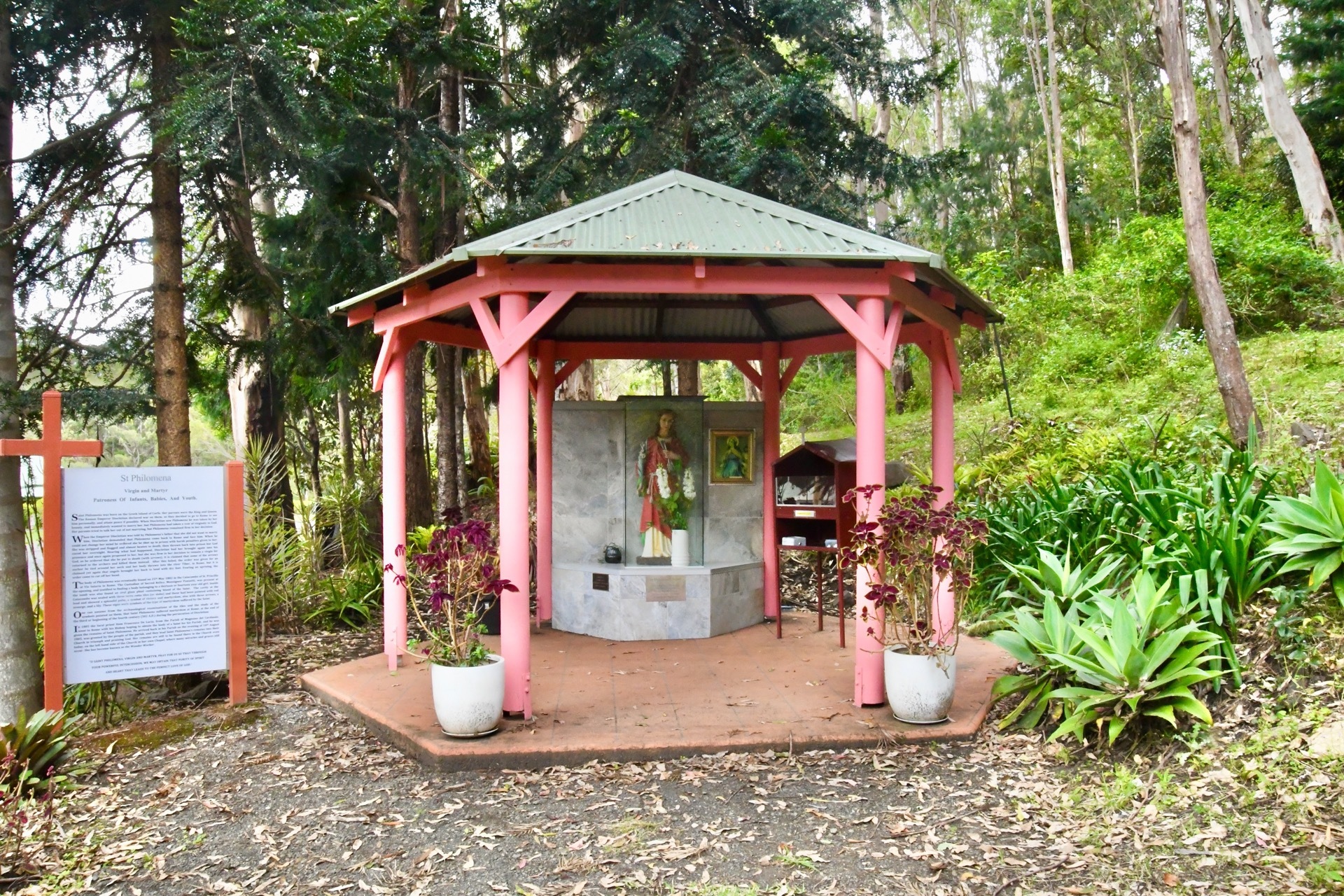Virgin and Martyr
Patroness Of Infants, Babies, And Youth
Saint Philomena was born on the Greek Island of Corfu. Her parents were the King and Queen. The Roman Emperor Diocletian declared war on them, so they decided to go to Rome to see him personally and attain peace if possible. When Diocletian saw Philomena, he was taken by her beauty and immediately wanted to marry her, but Philomena had taken a vow of virginity to God. Her parents tried to talk her out of not marrying, but Philomena remained firm in her decision.
When Philomena’s father told Emperor Diocletian that she did not want to marry him, Diocletian demanded that Philomena return to Rome and face him. When he could not change her mind, he ordered her to be shut up in prison with harsh penalties. She was stripped, flogged, almost beaten to death, and then thrown back into prison, but God cured her overnight. Hearing what had happened, Diocletian had her brought again into his presence and once again proposed to her, but she was firm in her decision to remain a virgin for God, so he ordered that she be put to death (with arrows). However, it is claimed that some arrows returned to the archers and killed them instead. After this failed, the order was given for an anchor to be tied around her neck and her body thrown into the river Tiber in Rome, but it is claimed that angels yet again brought her back to land with dry feet. Fearing an uprising, the order came to cut off her head.
The body of Philomena was eventually found on 25th May 1802 in the Catacombs of St. Priscilla at Via Salaria in Rome. The Custodian of Sacred Relics, Monsignor Ponzetti, was present at the opening and testified to finding a body belonging to a thirteen or fourteen-year-old girl. Inside the tomb was also found an oval glass phial containing the blood of the Saint. The cavity at the Catacombs was sealed with three terra cotta tiles (or slabs), and these had been painted with red lead and showed a splendid palm, a symbol of victory and martyrdom, also with three arrows, a scourge, and a lily. These signs were symbols of the type of martyrdom suffered by the Saint.
One can assume from the archaeological examinations of the tiles and the study of the symbols painted on them that Saint Philomena suffered martyrdom at Rome at the end of the third or beginning of the fourth century (302 A.D.) during the persecution of Diocletian.
In 1805 the local priest Dom Francesco De Lucia, from the Parish of Mugnano del Cardinale, went to Rome with his Bishop, hoping to obtain the body of a Saint for his parish, and he was given the remains of Saint Philomena. He arrived back in his parish on the evening of 10th August 1805 and was greeted by the people of the parish, and they led Saint Philomena’s remains into their Church in triumph and praising God. Her remains are still to be found there in the Church even today, on the left-hand side of the Church in her own Chapel, where many miracles and graces still occur. She has become known as the Wonder Worker.
“O SAINT PHILOMENA, VIRGIN AND MARTYR, PRAY FOR US SO THAT THROUGH
YOUR POWERFUL INTERCESSION, WE MAY OBTAIN THAT PURITY OF SPIRIT
AND HEART THAT LEADS TO THE PERFECT LOVE OF GOD.”


